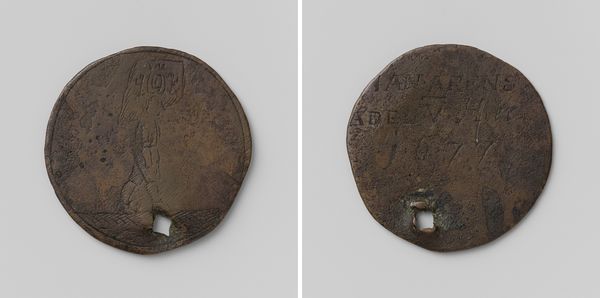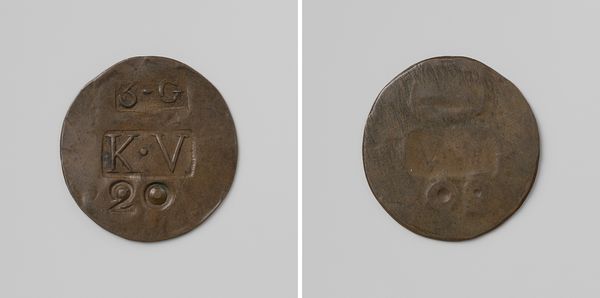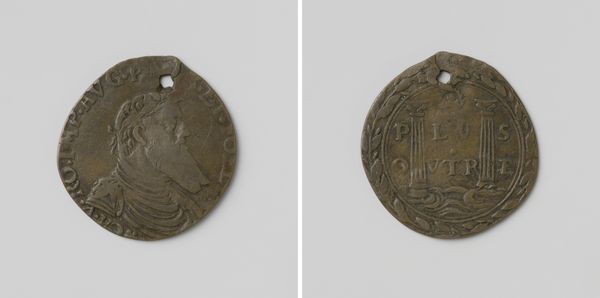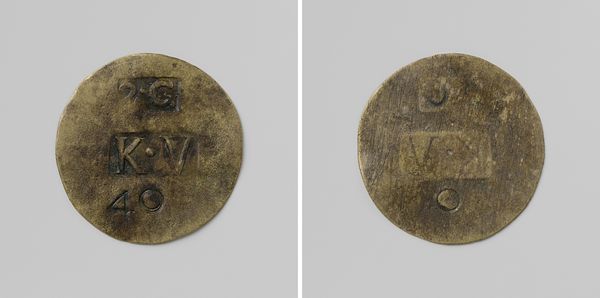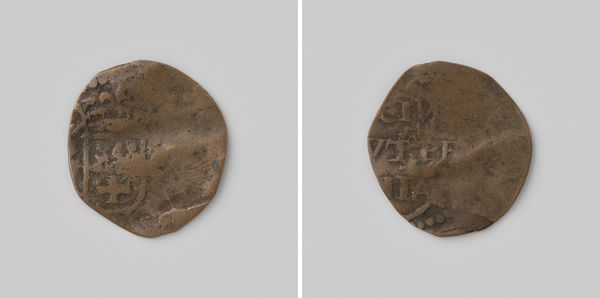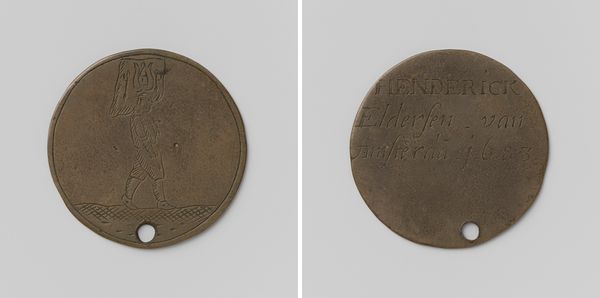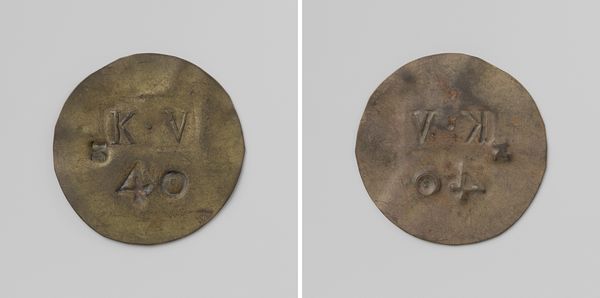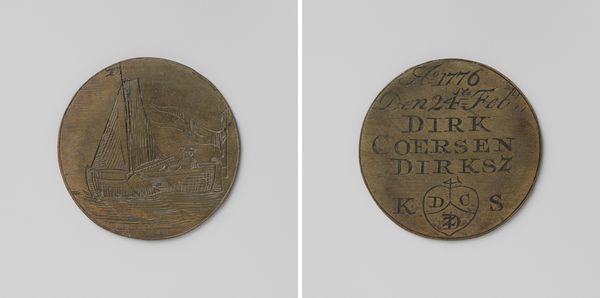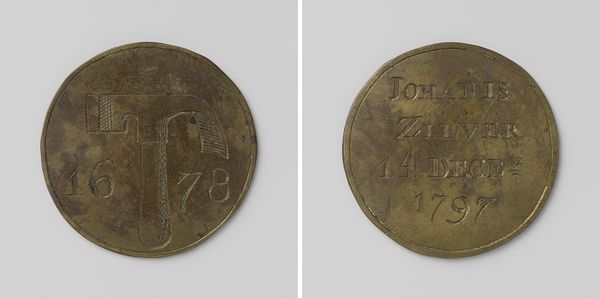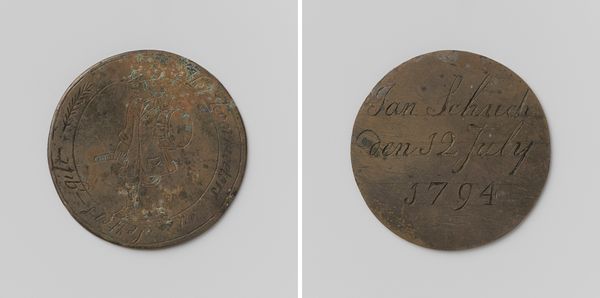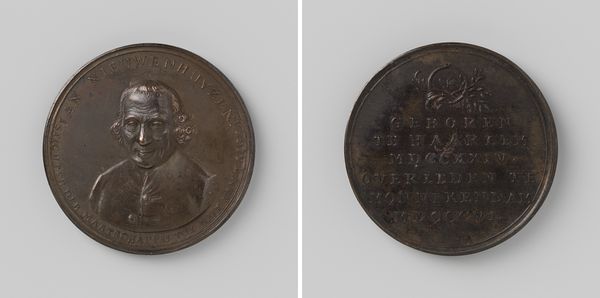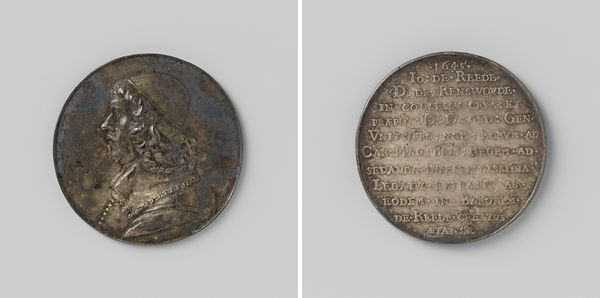
Roei-, steiger- en schuitenvoerdersgilde van Amsterdam, gildepenning van Jan Gerritse Vooren, ligplaats Lange Brug 1776
0:00
0:00
carving, print, metal, relief, bronze, engraving
#
carving
#
dutch-golden-age
# print
#
metal
#
relief
#
bronze
#
engraving
Dimensions: diameter 3.1 cm, weight 3.98 gr
Copyright: Rijks Museum: Open Domain
Editor: Here we have a bronze guild medal from 1776 of Jan Gerritse Vooren. It represents the Roei-, steiger- en schuitenvoerdersgilde - that's the rowing, jetty and barge operators guild! On one side there's an engraving of boats, and the other side has writing. It’s surprisingly small, and very worn...What can you tell me about the significance of this kind of object? Art Historian: Well, immediately, the material itself – bronze – speaks of endurance. A guild was a brotherhood. How does the imagery of boats impact your understanding? Editor: I suppose they were central to the identity of the guild...the boats *are* their livelihood. I'd imagine membership gave one some status, a little like belonging to a trade union nowadays, though much more local, and based on shared identity. Art Historian: Exactly! This medal would have functioned as both a symbol of that identity and perhaps a means of access to resources. It’s interesting to consider what’s *not* shown. Editor: Such as? Art Historian: Where are the people? Why choose such abstracted representations of their trade? Are they simply functional? Or could they also evoke ideas of travel, trade, and prosperity for the Netherlands at this time? Consider how water shapes Dutch identity. Editor: You've given me so much to consider! I hadn't thought about the absence of people or what the choice of boats might symbolize. Thanks for pointing out all those elements. Art Historian: It has been my pleasure, and I hope I sparked your awareness about symbolic association between objects and society.
Comments
No comments
Be the first to comment and join the conversation on the ultimate creative platform.

